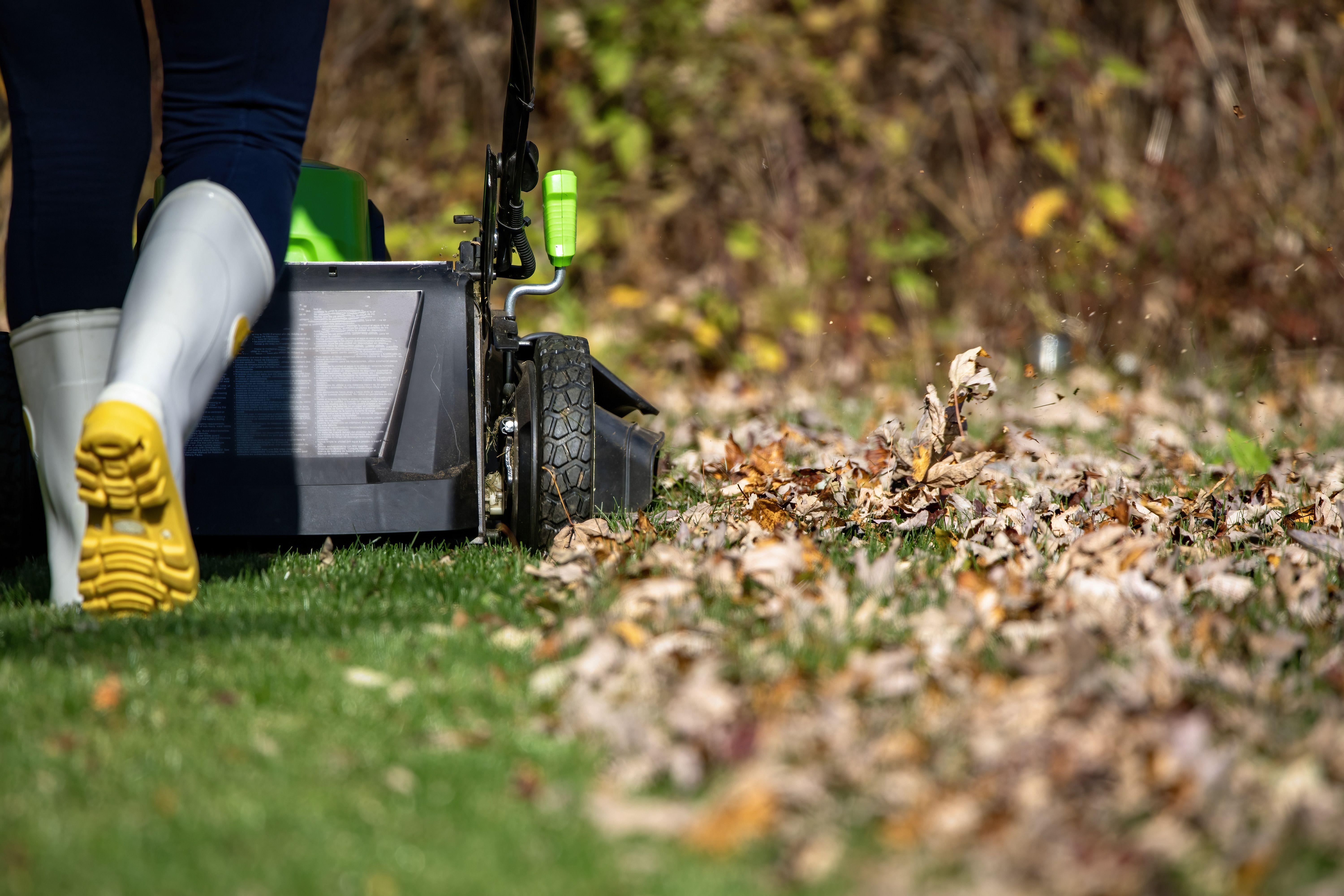Key Takeaways
- In fall, cut cool-season grasses to 2 inches and warm-season grasses 2 to 3 inches tall.
- Never remove more than one-third of the grass to avoid stressing the plant.
- Sharpen dull mower blades for the last cutting of the season to prevent lawn diseases.
The end of the growing season corresponds with the end of the mowing season. For that final mow in fall, is it better to mow the grass shorter or longer? The height of your grass as it goes into winter can amplify or avoid disease challenges and pest problems. Follow these tips to mow your grass to the right height in the fall so your lawn comes back healthy and strong in the spring.
Mowing Cool-Season Grasses in Fall
Send a cool-season lawn into winter at the low end of the healthy mowing range. Kentucky bluegrass or fescue is best maintained at a height of 2 to 4 inches. At the final mowing of the season, cut it to 2 inches tall.
The advantages of a shorter lawn in winter are many. Short grass is far less susceptible to winter fungal diseases than tall turf. There’s a misconception that taller grass overwinters best because the extra leaf material provides insulation for the plant crown. But actually, winter diseases multiply when the tall leaf blades fall over, creating a dense mat of foliage that provides the perfect environment for disease to flourish.
Rodents, especially mice and voles, are attracted to long grass in winter. These tunneling animals will burrow through the turf, often under the cover of snow. The damage isn’t noticed until spring, and recovery can take several months.
Related
Cut Grass Taller All Season Long
From the beginning of the growing season in spring until the last weeks in late fall, turf scientists generally recommend mowing lawns taller rather than shorter. Mowing high has a host of advantages that lead to stronger growth and a healthier lawn. Mow grass high until the last mowing of the season.
Taller lawn grass has a deeper, more robust root system than turf that is cut short. Tall grass also shades weed seedlings, preventing them from expanding and overtaking desirable grass plants, better than short turf. Finally, a lawn cut at the upper end of the mowing range is more likely to survive drought, thanks to the abundant leaf tissue shading the soil and limiting soil moisture evaporation.
Final Mowing of Warm-Season Grasses
Like cool-season grasses, warm-season grasses go dormant in the winter in many regions. Cut warm-season grasses, such as Bermudagrass, zoysiagrass, St. Augustinegrass, and centipedegrass, at the upper end of their mowing range in fall.
Depending on the height before mowing and following the one-third rule below, this is anywhere between 2 to 3 inches. The taller mowing height allows warm-season grasses to store more carbohydrates for winter. A full stock of carbohydrates will help these tender plants survive cold temperatures.
After a season of frequent mowing, mower blades are often dull by fall. Dull blades leave behind ragged leaf tips, which are quick entry points for turf diseases. Make sure your blades are sharpened before the last cut of the season so the lawn goes into dormancy as healthy as possible.
The One-Third Rule
When mowing in the fall, or any time of the year, always follow the one-third rule for healthy turf. Never remove more than one-third of the length of the leaf blade. To maintain a lawn at 3 inches tall, for example, mow it before it reaches 4½ inches tall.
Removing small amounts of the leaf blade each mowing minimizes plant stress. The turf quickly regenerates leaf tissue and continues developing a strong root system.
What to Do About Leaves
Fallen leaves are a friend or an enemy to the home lawn, depending on how they are managed. A thick layer of leaves has the potential to smother a healthy stand of grass, especially if left in place over winter.
Raking, blowing, and using a mower collection bag are useful for managing leaves on turf. If possible, aim to keep the collected leaves on your property. Make a compost pile, and your leaves will become valuable leaf mold that can be used to topdress the lawn or garden in about 12 months.
Mulch Mowing
If you own a mulching mower, you can simply chop up fallen leaves. The tiny leaf bits will filter through the leaf blades to the soil, where they will decompose and enrich the turf’s root zone instead of matting on top of the grass.
It is essential to mulch-mow leaves when the leaf layer is thin and dry. If leaf drop is particularly heavy, it might be necessary to run your mulching mower every couple of days to ensure you are mowing a thin layer of leaves that can be finely chopped.



